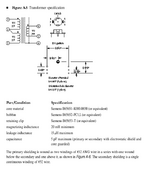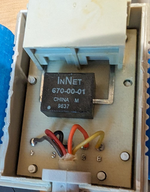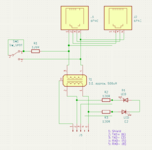tashtari
PIC Whisperer
This topic's been touched on in a handful of threads previously, but as far as I know, the question's never been settled. What kind of transformer (that you can buy new) would work for making a homemade LocalTalk/PhoneNet dongle?
Inside AppleTalk (2nd ed, page A-6) gives the following specifications:

...But I can't find anything matching them for sale. Trouble is that I don't really know which parameters have wiggle room in them and how much.
Anyone have any expertise to lend to the subject?
Inside AppleTalk (2nd ed, page A-6) gives the following specifications:

...But I can't find anything matching them for sale. Trouble is that I don't really know which parameters have wiggle room in them and how much.
Anyone have any expertise to lend to the subject?


